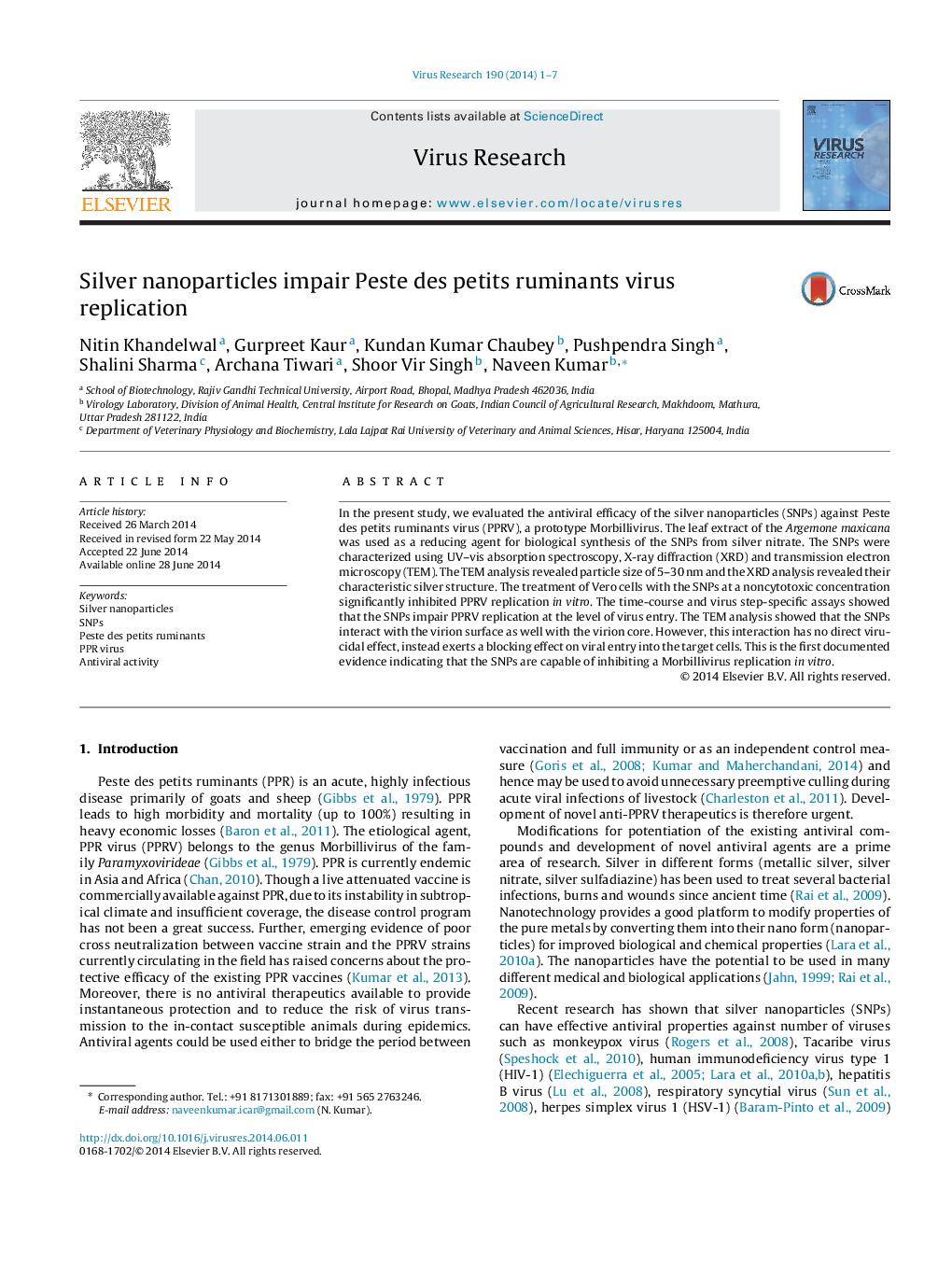| Article ID | Journal | Published Year | Pages | File Type |
|---|---|---|---|---|
| 6142371 | Virus Research | 2014 | 7 Pages |
â¢Silver nanoparticles (SNPs) were biologically synthesized.â¢SNPs were characterized using UV-vis absorption spectroscopy, XRD and TEM analysis.â¢SNPs impair Peste des petits ruminants virus replication in vitro.â¢SNPs act to inhibit PPRV entry in the target cells.â¢SNPs-PPRV interaction occurs both at virion surface and at the virion core.
In the present study, we evaluated the antiviral efficacy of the silver nanoparticles (SNPs) against Peste des petits ruminants virus (PPRV), a prototype Morbillivirus. The leaf extract of the Argemone maxicana was used as a reducing agent for biological synthesis of the SNPs from silver nitrate. The SNPs were characterized using UV-vis absorption spectroscopy, X-ray diffraction (XRD) and transmission electron microscopy (TEM). The TEM analysis revealed particle size of 5-30Â nm and the XRD analysis revealed their characteristic silver structure. The treatment of Vero cells with the SNPs at a noncytotoxic concentration significantly inhibited PPRV replication in vitro. The time-course and virus step-specific assays showed that the SNPs impair PPRV replication at the level of virus entry. The TEM analysis showed that the SNPs interact with the virion surface as well with the virion core. However, this interaction has no direct virucidal effect, instead exerts a blocking effect on viral entry into the target cells. This is the first documented evidence indicating that the SNPs are capable of inhibiting a Morbillivirus replication in vitro.
